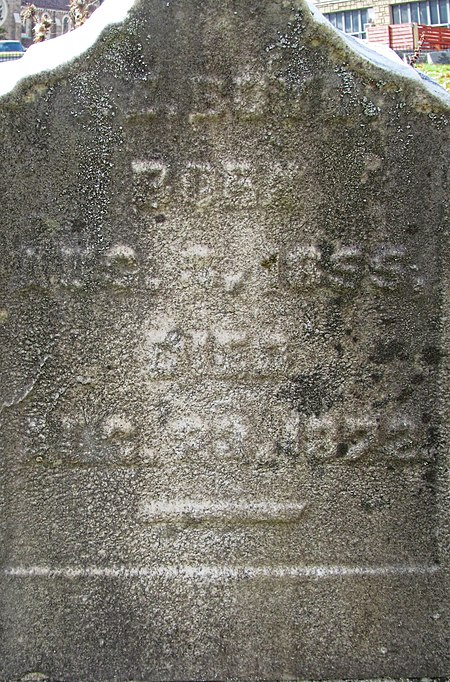



A rich-looking Ionic façade with a Victorian profusion of details, including rusticated stone blocks. It seems to have been a stock model; an exact duplicate was built for the Wilson family in the Union Dale Cemetery.


A particularly florid example of the romantic style that was popular in the middle 1800s. In its current state, it does not seem to have any dates for Irene Boyd: the name “Boyd” is on the back, and the name “Irene” on the front, with the rest of the stone given over to decorative elements. The footstone remembers a child, A. E. Boyd, who was born in 1855 and died in 1872.

Inscription on the footstone.

The back of the headstone.


One of the most picturesquely mysterious-looking structures in the city of Pittsburgh: we can imagine it as the setting for an atmospheric scene in an old-fashioned Universal horror movie.

This must have been one of the earliest interments in the cemetery, which opened in 1849, the year Henry Donnelly died. It is perhaps the most striking in-ground mausoleum in Pittsburgh. In the early and middle nineteenth century, these mausoleums cut into a hillside were the usual resting places of the rich; they are most often referred to as “mausoleums,” but sometimes as “vaults,” and perhaps it would be best to use that term, reserving “mausoleum” for a free-standing building. They fell out of favor by the 1870s or so, and proper mausoleums came into fashion.


